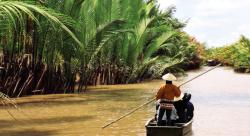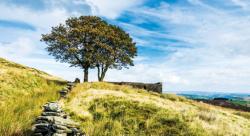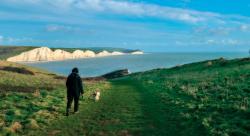After months being cooped up for winter it’s time to get out and explore some of the great places around the country, says Mary Novakovich.
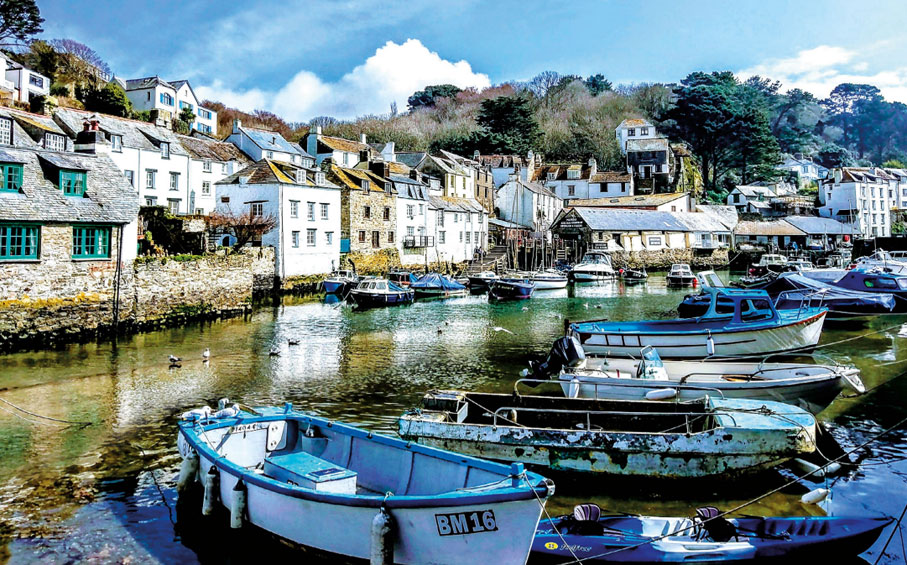
Polperro harbour
Cornwall
This year marks the 50th anniversary of the South West Coast Path, still one of the most popular long-distance footpaths in the UK. The Cornish part of the trail features breathtaking scenery, as the path meanders along the county’s long and jagged coastline. Try some of the sections that run between Padstow and St Ives, which go past golden beaches, small fishing villages, the Bedruthan Steps and the drama of Trevose Head.On the more sheltered south-eastern side of Cornwall, revel in the wildflowers that flank the path from Penzance to Falmouth, taking you past the coves of the Lizard Peninsula as well as the historic sights of St Michael’s Mount and Pendennis Castle.
As you carry on eastwards towards the delightful town of Fowey, it’s tempting to take a detour to visit the Lost Gardens of Heligan and the Eden Project. Afterwards, you will have the pleasures of the Polperro Heritage Coast to discover as you pass its pretty coves.
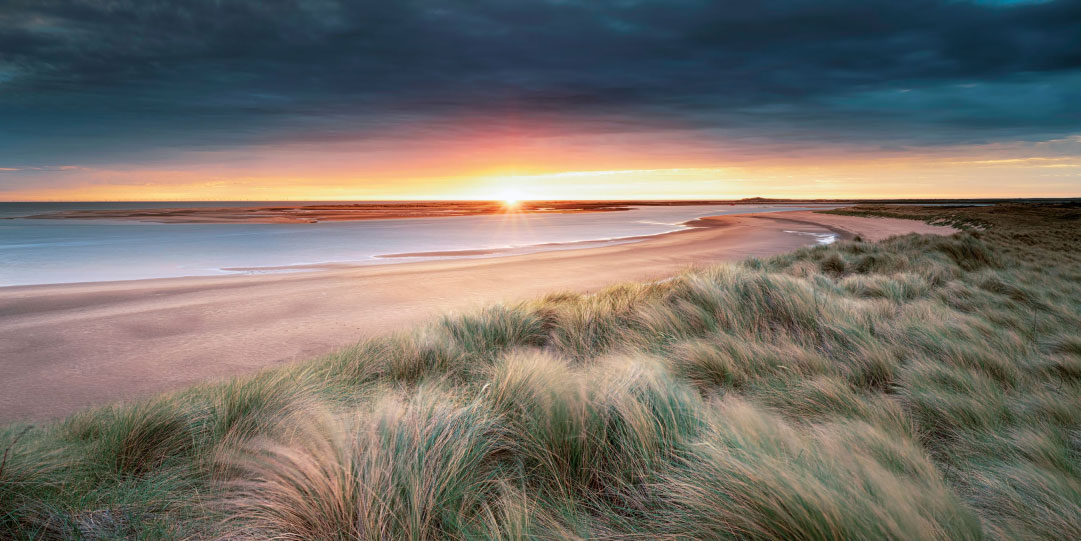
The beach at Brancaster
Norfolk
Norfolk’s magnificent coastline is wonderful at any time of year, but spring brings a particular sweetness to the salty air. This is the time to contemplate taking on sections of the Norfolk Coast Path, which stretches from Hunstanton in the Wash to Sea Palling, just north of Great Yarmouth. Along the way you’ll pass all the stars of the coast as well as the Norfolk Coast Area of Outstanding Natural Beauty: Holme Dunes National Nature Reserve, Brancaster, Holkham, Blakeney, Cley-next-the-Sea and Sheringham Beach among many others.The county’s man-made beauties are just as compelling. Wander around the elaborate interiors of Palladian-style Holkham Hall, near Burnham Market, before roaming the vast grounds and walled garden. Just south of Cromer is the 17th-century Felbrigg Hall, Gardens and Estate, whose 520 acres of woods and parkland can be explored on waymarked footpaths taking you past a hidden lake and 17th-century buildings.
Nearby there is more loveliness in the form of Blickling Hall. Its 55 acres of formal gardens are just a warm-up for the estate’s 4,600 acres of woodland and parkland. There’s a four-mile accessible trail that goes around the perimeter and into serene woodland.
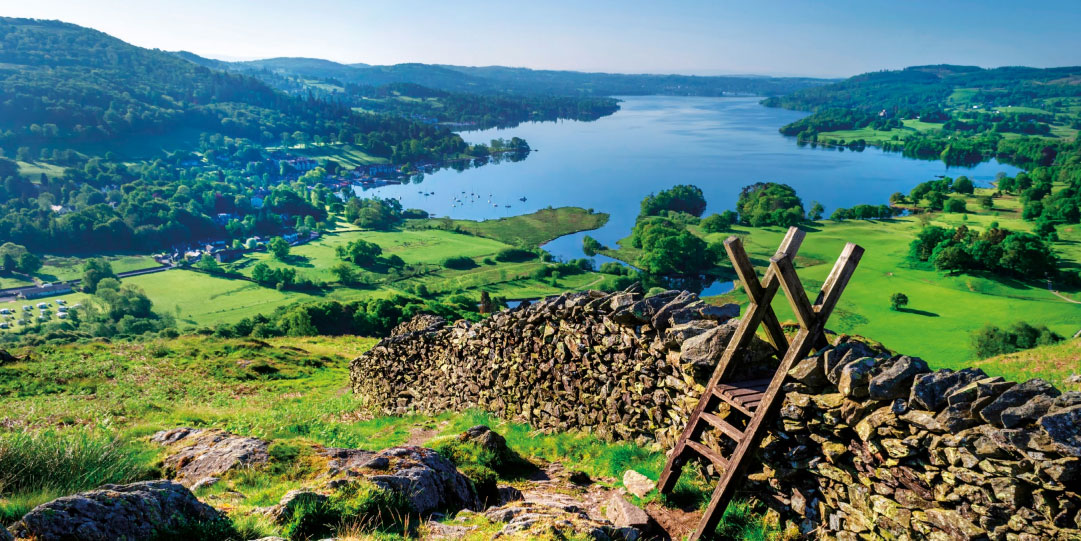
Lake Windemere
Cumbria
Between the Lake District National Park and Cumbria’s long coast there is a dizzying number of things to do and see. The lakes themselves – including Coniston Water, Buttermere, Windermere, Derwentwater, Bassenthwaite and Ullswater – are utterly captivating, and all offer superb hiking and boating in majestic surroundings.If you’re in the mood for a seaside stroll, head to St Bees and wander under the town’s towering sandstone cliffs. It’s the only part of England’s Heritage Coast between Scotland and Wales.
The towns and villages of the Cartmel Peninsula have become firm fixtures on the foodie trail, thanks in great measure to the chef Simon Rogan. Start in the Edwardian seaside town of Grange-over-Sands, where you can join the Cistercian Way long-distance trail towards the self-proclaimed home of sticky toffee pudding, Cartmel.
If you’ve booked in advance, you can have a meal at either of Rogan’s Michelinstarred restaurants, the very smart L’Enclume or the more casual Rogan & Co. Continue the foodie theme with a visit to Holker Hall and Gardens in Cark-inCartmel. This grand Victorian hall is set in more than 17,000 acres and features a food hall showcasing the estate’s produce.
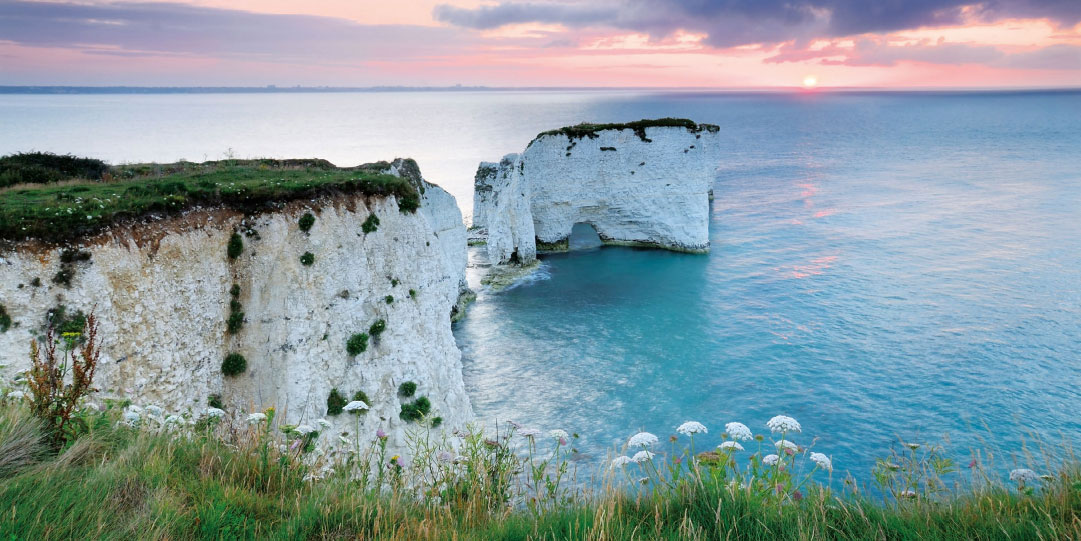
Old Harry Rocks
Dorset
For a relatively small county Dorset certainly punches above its weight. Its Unesco-listed Jurassic Coast is one of the most dramatic stretches of coastline in the UK, with extraordinary natural wonders including the limestone arch of Durdle Door. If you’re walking this part of the South West Coast Path you’ll get sublime views above the cliffs. Just to the east is Lulworth Cove, whose protective cliffs almost form a circle.For some more unusual sights follow the West Dorset Heritage Coast and the long spit of shingle that makes up Chesil Beach. At its easternmost point dangles the Isle of Portland, with Pulpit Rock at its southernmost tip.
Further west is the Studland peninsula. Follow the South West Coast Path west of Studland village to gaze at Old Harry Rocks, giant limestone cliffs studding the edge of the nature reserve. Carry on up Studland peninsula for some beautiful beaches as well as the marker for the end of the South West Coast Path (or the beginning, depending on how you approach it).
From here you can catch the chain-link ferry to Sandbanks and the appealing port of Poole, Europe’s largest natural harbour. In the centre of Poole Harbour is Brownsea Island, Enid Blyton’s inspiration for Whispering Island in her Famous Five book, which you can visit by boat.
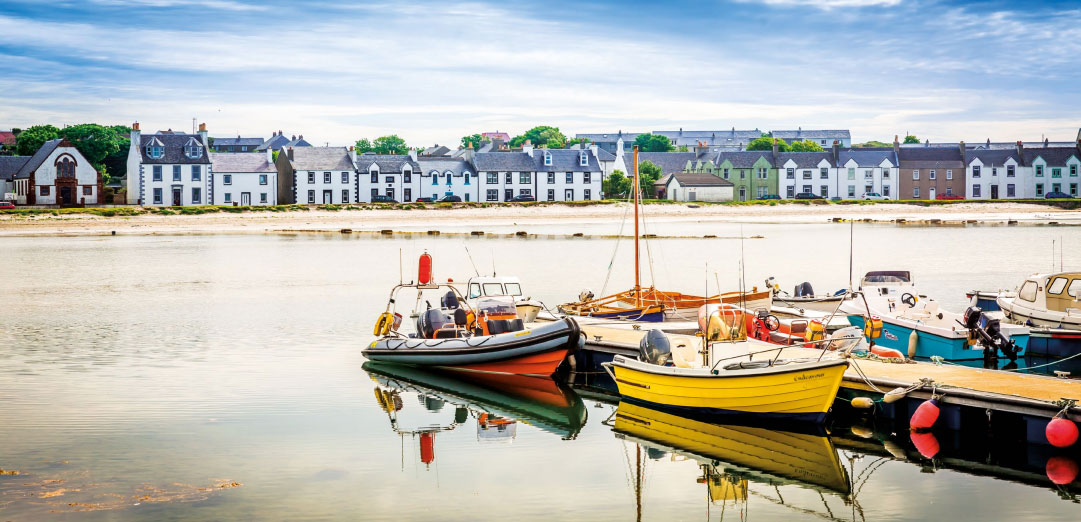
Port Ellen on the Isle on Islay
Scotland
If you’re already in Edinburgh, it’s just a short train ride across the Firth of Forth to Scotland’s latest town to be granted city status: Dunfermline.Start at the city’s most impressive landmark, the 11th-century Dunfermline Abbey and Palace, where Robert the Bruce (minus his heart, of course) is buried along with seven other Scottish kings. The city also pays homage to one of its most famous sons, the philanthropist Andrew Carnegie, whose former home is a museum. Carnegie donated 76 acres of parkland to the people, which is now Pittencrieff Park. Visit the Dunfermline Carnegie Library and Galleries, whose free exhibitions tell the story of this ancient city.
If you’re craving wilderness, head west to Scotland’s newest driving route, Kintyre 66, which snakes around the Kintyre Peninsula in a 66-mile loop. Six spurs off the route guide you to a few of Kintyre’s unmissable sights and experiences, including fabulous views of the dunes of Machrihanish Bay and the Glengyle, Springbank and Glen Scotia distilleries in Campbeltown.
Drive to the southernmost tip and you’ll see the Mull of Kintyre section of the peninsula and its distinctive lighthouse. It’s also tempting take a ferry from Kennacraig at the northern end of the route to the Isle of Islay and Jura.
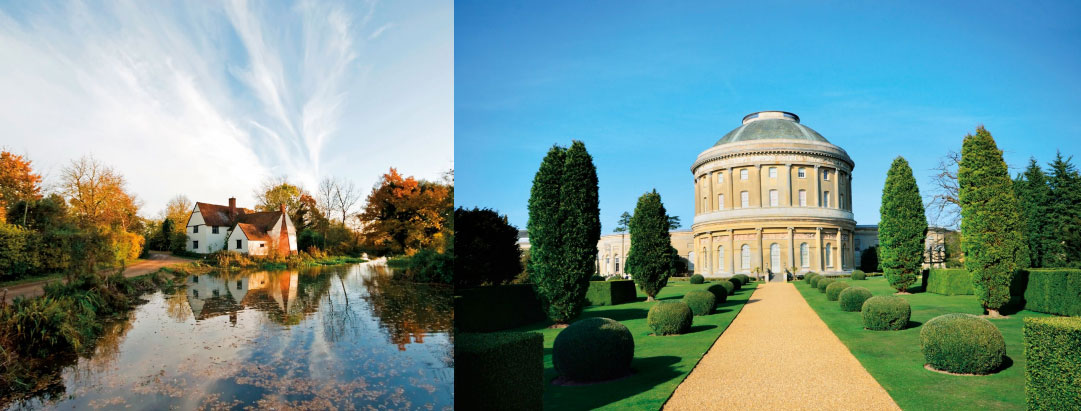
Willy Lott’s cottage in Flatford and Ickworth House
Suffolk
Watch spring work its magic on Suffolk’s many nature reserves, including the otherworldly atmosphere of Orford Ness, which reopens at Easter. Hop on the ferry to the island reserve, home to fascinating wartime radar and research sites as well as walking trails that reveal the region’s rich wildlife.As spring colour returns to Constable Country, take a walk along the Stour Valley Path and St Edmund Way to Flatford and step into the settings of some of Constable’s most memorable paintings. Once you’ve checked out the Constable exhibition in Flatford Bridge Cottage, wander along to Flatford mill and Willy Lott’s cottage and feel yourself going back in time.
If Constable Country is classically English, get a taste of Italian style at Ickworth House near Bury St Edmunds. The unusual rotunda was built from designs by Antonio Asprucci for Frederick Hervey, the 4th Earl of Bristol, between 1795 and 1829. The house, now owned by the National Trust, is crammed with impressive paintings and one of the best Georgian silver collections in Britain.
A short drive away is Newmarket, the centre of horseracing. Set aside some time to make the most of the National Horseracing Museum: within its fiveacre site are an interactive museum, the Packard Galleries of British Sporting Art and a home for retired racehorses. Book afternoon tea and a tour in the lavish setting of the Jockey Club Rooms, and go behind the scenes on a guided tour at the National Stud
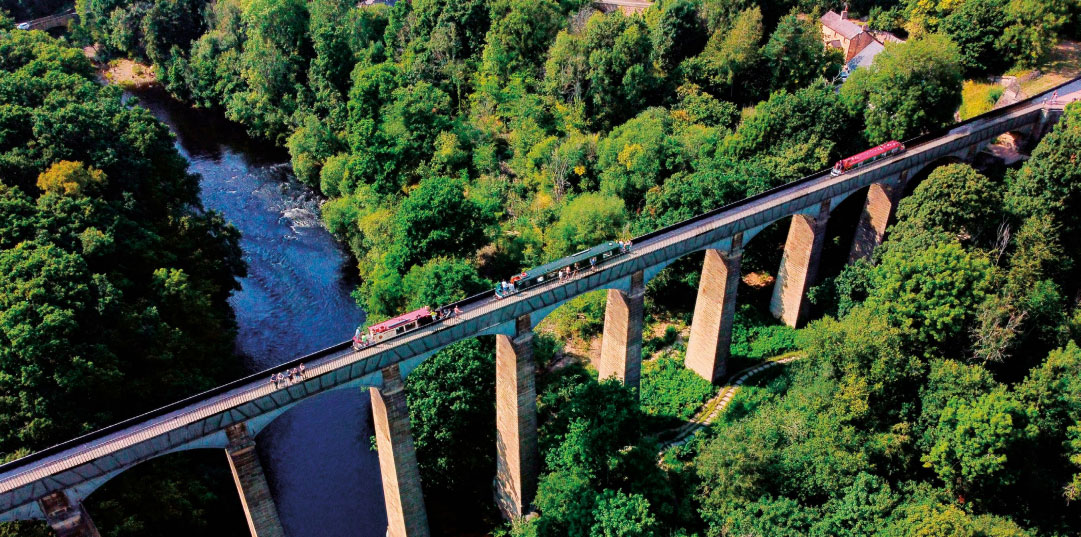
Pontcysyllte Aqueduct near Llangollen
Wales
Wales is home to some of the UK’s most riveting natural wonders - Snowdonia National Park, the Pembrokeshire Coast National Park, the Gower Peninsula and the Brecon Beacons, among them. But one of its most jaw-dropping sights was made by man: the Pontcysyllte Aqueduct and Canal, the so-called ‘stream in the sky’ that towers 125ft above the River Dee carrying boats along the Llangollen branch of the Shropshire Union Canal. Since 1805 generations of narrowboaters have made their cautious way across this engineering marvel, a Unesco World Heritage Site, hearts inevitably in mouths.Follow the canal a little further west and you come to Llangollen, one of the most charming market towns in Wales. If you visit in early July you can catch classical concerts and events during the Llangollen International Musical Eisteddfod, where several thousand performers from around the world kick off the Welsh summer in sublime musical style. Come also for the fantastic range of food and bookshops, as well as rides on the heritage railway that trundles through this Area of Outstanding Natural Beauty.
Are you looking to advertise your holiday home? Renowned for our classified advertising, The Lady provides the perfect platform to promote your property. For more information, contact Andrea today: andrea.taylor@lady.co.uk




